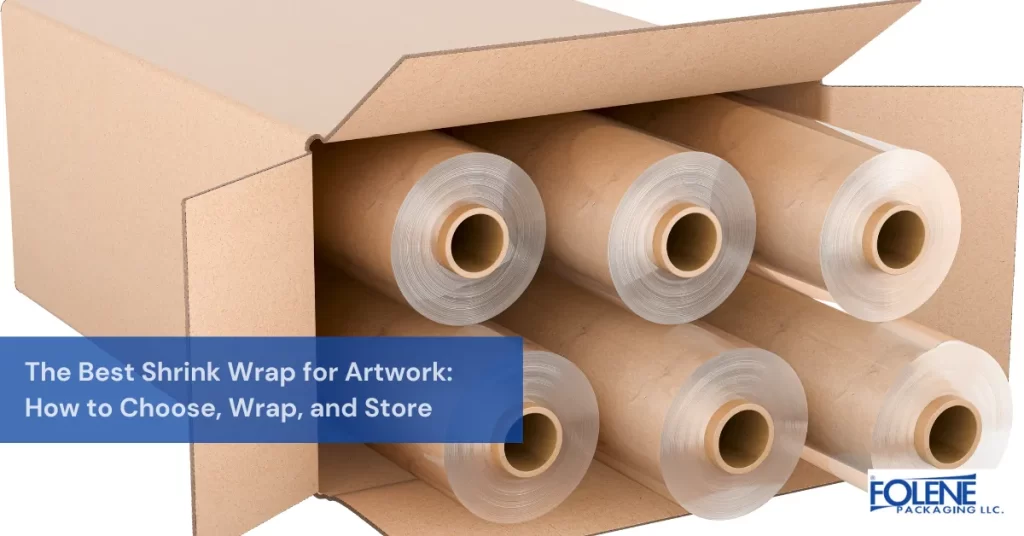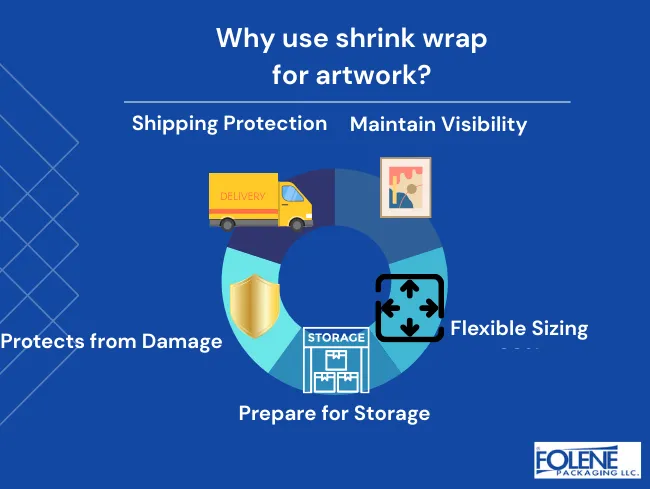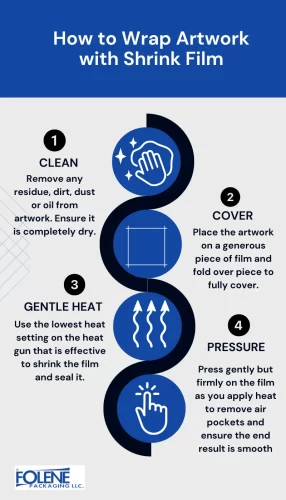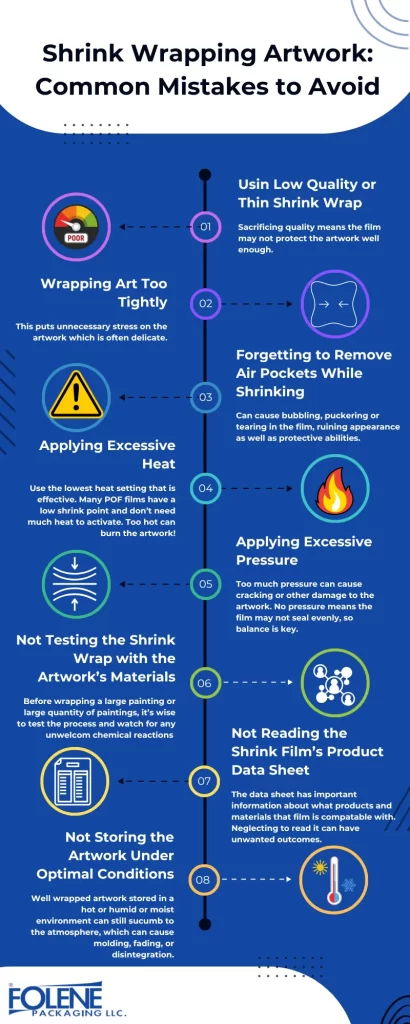
Artists need a safe and cost-effective way to both store and transport their artwork. Artists may want to safely store pieces for long or short term, protecting them from harm. Many artists also need to transport their artwork to art shows or ship to customers who buy their pieces. High-quality shrink film offers an excellent solution as it is clear, strong, and durable while also cost-effective for high volume. Folene Packaging explores the properties to look for in shrink wrap for artwork.
Benefits of Using Shrink Wrap for Artwork
Quality shrink films are well-suited for preserving and transporting artwork for a number of reasons. The waterproof film protects artwork from dust, moisture, and potential damage during storage and shipping. It is thin and durable enough to allow for easy handling and transportation of artwork without compromising its safety. Since shrink film is flexible and can be cut to size from a roll, it can effectively be used for many types and sizes of artwork, from paintings to photographs to prints, without having to purchase different sizes to wrap each piece.
Transparent shrink film also provides a non-yellowing layer of protection that does not detract from the artwork’s visibility and appearance. Some artists even prefer to display their work at art shows encased in shrink film to protect it from fingerprints or other damage.

Choosing the Right Shrink Wrap
Here are some guidelines to help you choose the right type of film for your artwork:
Select a high-quality shrink wrap that is compatible with artwork. Polyolefin films are an excellent choice for artwork as they offer exceptional clarity without compromising strength or durability.
Consider the size and type of artwork to determine the best shrink wrap size and material.
Look for shrink wrap with a 3-5 mils thickness for optimal protection.
Choose a shrink wrap with a low shrink rate to prevent damage to the artwork.
Consider using a shrink wrap with a UV-resistant coating to protect against fading.
Preparing Artwork for Wrapping
Ensure the artwork is completely clean and dry before wrapping to prevent damage or discoloration. Remove any loose debris, dust, oils, or residue from the artwork’s surface with a soft clean cloth. If visibility is not important (as is usually the case for long-term storage), consider using acid-free tissue paper or cloth to separate the artwork from the shrink wrap. These steps will help prepare the artwork for successful wrapping.
Wrapping Techniques for Artwork
Place the artwork on the shrink wrap, and fold the film over the piece. Make sure to check that the film is large enough to cover the entire piece with margins on all sides.
Use a heat gun on the lowest effective setting to shrink the wrap, starting from the center and working your way outwards.
Apply gentle yet even pressure to the shrink wrap to prevent wrinkles or air pockets.
Consider using a professional wrapping service for large or complex pieces.

Shipping and Storage Considerations
Since artwork is fragile, using sturdy secondary or even tertiary packaging, such as boxes or containers, is wise to further protect the pieces during transportation. Consider using foam inserts or padding to prevent movement and damage.
Store wrapped artwork in a cool, dry place away from direct sunlight. Avoid stacking wrapped artwork on top of each other to prevent pressure damage. Use a climate-controlled storage facility for long-term storage.
Common Mistakes to Avoid
Here are several pitfalls to avoid when wrapping artwork with shrink film.
Using low-quality or thin shrink wrap that may not provide adequate protection.
Wrapping artwork too tightly, which can cause damage or creasing.
Failing to remove air pockets or wrinkles during the wrapping process.
Using excessive heat or pressure, which can damage the artwork or shrink wrap.
Not testing the shrink wrap for compatibility with the artwork’s materials. It’s important to always check the product data sheet to ensure the shrink film material is compatible with materials in the piece of artwork.
Making sure to avoid these pitfalls can circumvent frustrating disappointment.

Best Practices for Long-Term Preservation
When you want to store artwork long term, these tips can help prepare the best conditions for optimal storage.
Store wrapped artwork in a cool, dry place away from direct sunlight.
Avoid exposing wrapped artwork to extreme temperatures or humidity, as those conditions can warp the artwork.
Consider using acid-free materials and storage containers
Avoid touching or handling the wrapped artwork excessively.
Consider using a conservation-grade shrink wrap for long-term preservation.
Finding the Right Shrink Wrap for Artwork: In Conclusion
Using high-quality shrink wrap for artwork is essential for both storage and transportation, ensuring that your creations remain safe from dust, moisture, and potential damage. By selecting the right type of film, preparing your artwork properly, and employing effective wrapping techniques, you can preserve the integrity and appearance of your pieces. Remember to avoid common pitfalls such as using low-quality materials or wrapping too tightly, as these can lead to unwanted damage.
For artists looking to ensure the best preservation of their work, Folene Packaging offers a range of premium shrink wrap solutions tailored to meet your specific needs. Reach out to Folene Packaging today to discuss how we can help safeguard your artwork effectively. Your creations deserve the best protection!



